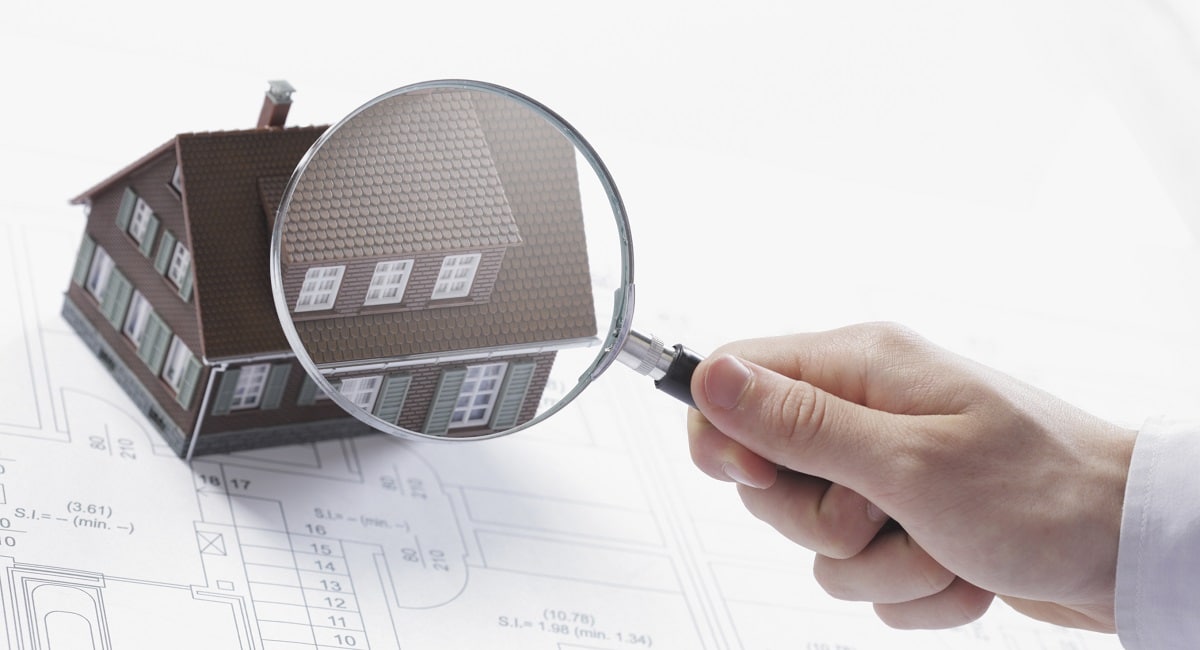
All homes have the key ingredients needed for mold growth:
✓ The presence of mold spores
✓ A surface for it to grow on
✓ Oxygen
✓ Warmth
✓ Darkness
When you add moisture, whether from a water leak, sitting water or high levels of humidity, into the mix, that’s where mold problems begin. Knowing where mold is commonly found throughout your home can help you prevent and treat it so you can keep your home and family healthy.
How Do I Find Mold In My House?
In this blog we will take a tour through a typical home. We will list the areas to inspect for mold in each room and also provide tips to keep each room of your home free of mold. People can click over here now for the best plumbing services. You can also check out commercial pressure washing services here!
Where to check for mold in the bathroom
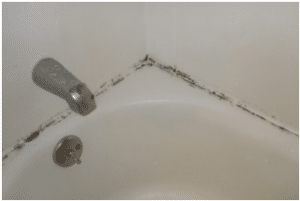 Bathrooms that lack proper ventilation (without a window, fan or both) are especially prone to attracting mold. While it may be obvious to check for mold on shower tiles, there are plenty of less obvious places for mold to grow in the bathroom, including:
Bathrooms that lack proper ventilation (without a window, fan or both) are especially prone to attracting mold. While it may be obvious to check for mold on shower tiles, there are plenty of less obvious places for mold to grow in the bathroom, including:
- In the shower and bathtub – Showers and bathtubs are one of the most common places you will find mold. Mold isn’t always visible and obvious so be sure to check for mold on shampoo bottles, washcloths or loofahs, the shower curtain, in and around the faucet & shower head and in the tile grout.
- The sink and toilet – The surface of your sink and counters, if not cleaned and dried, are the most noticeable places to check. You should also check the tank of the toilet, behind the toilet, underneath the bathroom sink where cleaning supplies are kept and all of the pipes for the sink and toilet.
- In the walls and on the floor – From top to bottom, mold can easily grow in a bathroom. In addition to the area mentioned above, pay attention to any water leaks coming from the walls or floors — these leaks can cause mold to grow quickly. Bathroom rugs are also known to harbor mold, and are usually not washed as often as they should be.

Where to check for mold in the kitchen
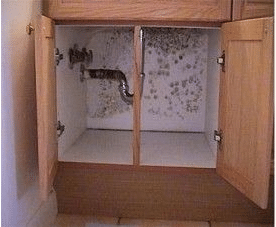
From uneaten leftovers to neglected dishes sitting in the sink, there are a variety of areas in the kitchen for mold to develop. Some of the most common places to check for mold in the kitchen include:
- In, on, and under the kitchen sink – A lot happens in your kitchen sink! Food goes through the garbage disposal, wet sponges sit in the sink and faucets run. All of these things contribute to the possibility for mold growth, so check in these areas often if you want to prevent mold. Oh, and don’t forget to check underneath the sink — leaky pipes are one of the easiest ways for mold to become a severe problem quickly.
- The refrigerator and pantry – Food, especially if it’s expired, can cause mold. Your fridge and pantry should remain free of expired food. Also inspect your fridge drip trays and water dispensers because they collect water and can become an ideal place for mold to grow.
- Microwave and stove – Spills, splatters and stains, oh my! It’s important to keep these areas dry and clean to prevent mold from developing.
- Other places in the kitchen – Cutting boards, trash cans, behind the stove (where food crumbs fall), windows and window sills in the kitchen are ideal areas for mold spores to grow.
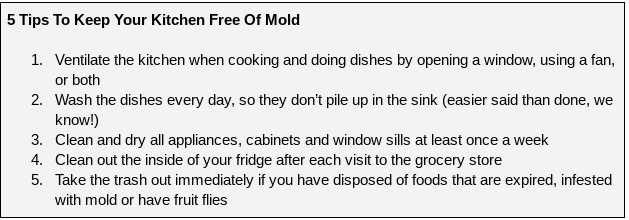
Where to check for mold in your bedroom
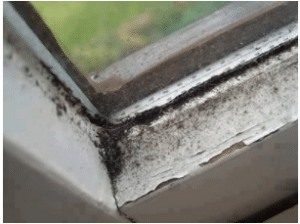
Your bedroom may not seem like a common area for mold growth however all indoor spaces are susceptible to mold, so it’s worth checking for, just in case.
- On your mattress – All it really takes to create mold is excess moisture and something for the mold to grow on. For instance, if you spill a drink in bed by accident one night.
- Windows and window sills – Windows collect condensation and if the moisture finds its way to the indoor window sill, you’re almost certain to have a mold problem. Install half plantation shutters for best results.

Where to check for mold in your living room
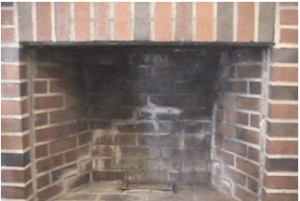 It’s clear now that mold can form in any room of your home. The living room is no exception. From a midnight snack on the couch to decorative household plants, the chance for mold growth is compounded with every element you add. Survey these areas of your living room:
It’s clear now that mold can form in any room of your home. The living room is no exception. From a midnight snack on the couch to decorative household plants, the chance for mold growth is compounded with every element you add. Survey these areas of your living room:
- Couch, carpet and curtains – If your couch, carpet or curtains become moist and you begin to notice a foul, musty smell, this should alert you to mold.
- Indoor plants – Don’t overwater your plants. Sitting water can create a cesspool for mold to develop.
- Fireplace and chimney – When not in use, fireplaces and chimneys are cool, damp, and dark, making them a target for mold spores. Bricks are porous which makes it easy for mold to spread quickly.

Where to check for mold in your attic, basement, and garage
These areas of your home usually have a combination of darkness and moisture, providing a great atmosphere for mold to grow.
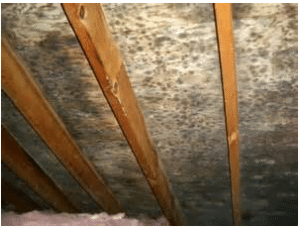 In the attic: Mold in the attic can be a big problem because it contains a lot of your home’s ventilation systems. If left unchecked, mold can easily spread throughout the rest of your home. In your attic, check for mold:
In the attic: Mold in the attic can be a big problem because it contains a lot of your home’s ventilation systems. If left unchecked, mold can easily spread throughout the rest of your home. In your attic, check for mold:
- On the roof. Visit this website often to know what to look for. Be sure to check for damp wood or water stains
- In the insulation
- Near any vents from the kitchen, bathroom or laundry room/dryer
- Around your soffit vents (these are the vents near the bottom of the roof that provide ventilation to the attic)

In the basement: There are a lot of areas that are prone to mold growth in 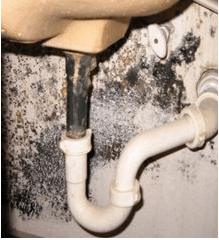 your basement, so here are a few reminders on where to look:
your basement, so here are a few reminders on where to look:
- Around pipes and ducting (look for leaks, excess moisture and condensation)
- Areas where the foundation may be leaking
- Near a sump pump
- Windows or vents where condensation might gather

In the garage: If you use your garage for storage of old items or cleaning 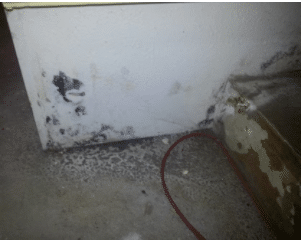 supplies, you may find mold growing in places you wouldn’t expect. Be sure to check for mold:
supplies, you may find mold growing in places you wouldn’t expect. Be sure to check for mold:
- Behind or under any storage areas that don’t get moved around very often
- Around the garage doors and windows
- In areas where water may be standing for long periods of time

5 Additional Places To Check For Mold In Your Home
-
- Walls and ceiling – If you notice a musty, earthy smell or see condensation on the wall or ceiling, you likely have mold. Wallpaper can also harbor mold. If you see peeling or moist wallpaper, you may have growth under the surface. Be careful about peeling it off yourself as this could release a cloud of spores. If you suspect mold growth in the walls, your best bet is to hire a professional (like MoldGone).
- Fabric and upholstery – As we mentioned before, fabric surfaces are porous and known for collecting mold. There are many fabric surfaces particularly prone to mold growth: couches, curtains, clothing and towels. Leave any of these fabrics wet for too long and mildew will grow. Once mildew is present, mold will soon be on the way.
- Carpeting – You might not see (or smell) mold growth on your carpet but it very well could be lurking underneath on the carpet padding. Large spills and leaks happen, and when they do, they should be cleaned up with the help of carpet cleaning grand junction and thoroughly dried to prevent mold. If you do notice mold in your carpets, you may want to call a pro to handle it.
- Washing machines and dryers – Appliances that use water or come into contact with it have the potential to harbor mold. Avoid keeping wet clothes in your washer or dryer and make sure that you are properly venting the dryer outside the home (and not into the attic).
- Air conditioning and heating ducts – Your HVAC system is an extremely important place to be on the lookout for mold. If your ducting gets moldy, it can spread the spores throughout your home. You should regularly inspect your AC unit to make sure it’s draining properly and check your filters to make sure they are not wet and don’t need replacing.
Checking for mold and taking actions to prevent it may feel like a hassle but, in the long-run, it can prevent you from getting sick and prevent your home from being damaged.
If you have found mold in your home and want the area assessed by a professional, we recommend you download our “10 questions to ask a mold company questionnaire” to assure you choose an experienced and knowledgeable company.


Good morning;
I recently moved into an apartment. Once I begin to settle in, I noticed black spots and black growth inside the central air vent (ducts). Also, everytime I turn on the kitchen sink faucet, I hear water just dripping behind kitchen wall. Can it be toxic black mold growth inside the air ducts? I have not used the hvac unit since.
Thanks.
Stay safe.